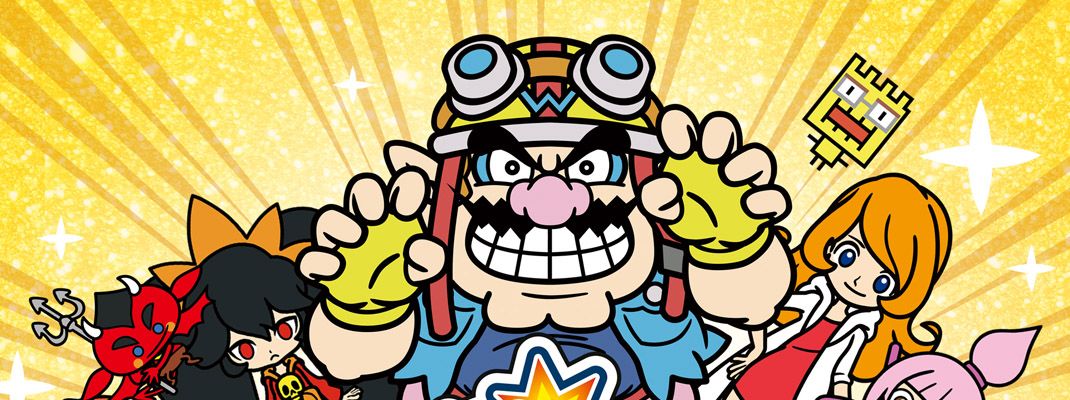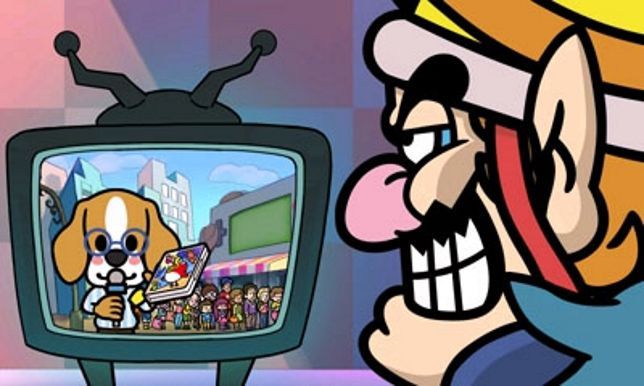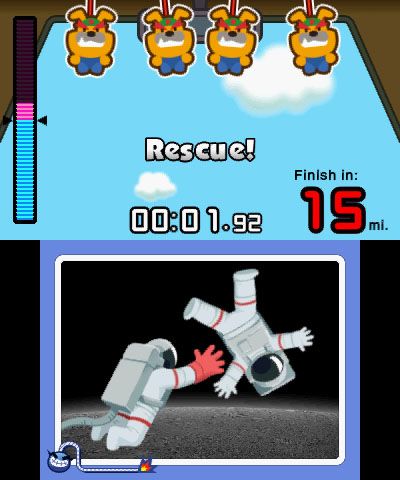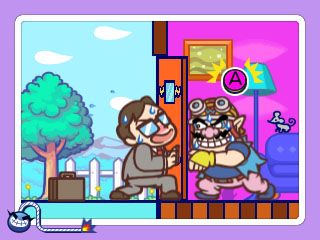Wario's debut appearance was as the antagonist in Super Mario Land 2, after which he would appear in his own series known as Wario Land. After taking a walk down the platforming path, Wario turned to his more unique form of gameplay with WarioWare. Unlike anything he'd been in before, WarioWare aimed to be a culmination of just about every genre with a heavy emphasis on quick challenges known as microgames. This evolved into a long series seen across multiple platforms, with the latest being WarioWare Gold for the 3DS.
Like previous WarioWare titles, the story in Gold follows Wario's latest antics to get even more money. Wario has uncovered a hidden golden treasure, but has realized he's all out of cash for food and everything else. After seeing that video games are hugely profitable on television, he decides to run a contest with an entry fee of ten thousand gold and a supposed reward of ten million. This is of course just a farce, as Wario doesn't even expect anyone to get that far. Wario hires his various friends to make microgames and begins the contest. Among the audience, however, is a mysterious young girl who seems to have a bone to pick with Wario while he has no idea who she is. He promptly ignores her and enjoys the many people flocking to his contest and throwing their gold at him with no intent to return a single coin.
There are a few different modes that can be played in Gold, but it starts out limited with just the Story. The story is where players get to meet each individual character and play through a variety of their microgames. Each character uses one of three microgame styles: mashing, twisting or touching. Mashing uses buttons and the d-pad, twisting is simply moving the 3DS left or right and touching is of course using the bottom screen with the stylus. Each segment for characters has its own story, which is always lighthearted and comedic as they go through unique scenarios that eventually lead to them all meeting up. The microgame challenges include four lives before its game over, but fortunately the story mode is forgiving and getting through each one the first time doesn't require too much difficulty. In addition to this, gold coins are rewarded after completing each segment and 100 of them can be used to after a game over in order to continue instead.
While the story itself could be considered the meat of WarioWare Gold, there's a ton of optional content that needs to be unlocked in order to enjoy. Using the various gold coins earned from the story and microgames, players can go to the arcade and use capsule machine for gold in order to unlock goodies for the toy room. This includes full-on minigames, various soundtracks and even character cards among other things. Outside of the arcade, there's also a challenge mode which includes eight new ways to experience microgames with new scenarios. One of which is even a local-multiplayer challenge where two people can go head-to-head playing the same microgames to see who will last the longest. It's a shame that this is only local multiplayer and not online, but it's still a great to see WarioWare continuing the trend of having multiplayer options.
The microgames themselves are the main features in every WarioWare title. The entire collection can be played in the index, but it requires them to be unlocked first. Playing a microgame once in any mode will unlock it in the index, and each one can be played at an increasing speed and difficulty each time. Every microgame also comes with a target score and reaching that will reward some bonus coins. Each high score for these will also reward with more coins, so it makes worth going in to play each one or at least favorites. The index is also nice to practice for other challenges that are a bit more difficult since they can be played almost endlessly.
The final extra addition comes in the way of missions. These aren't any sort of microgame modes, but instead act as a sort of achievement system. Each one has its own requirement and completing it will earn a medal along side some gold coins. While these are entirely optional, they're a nice extra challenge for those who want to push their skills to the limit. Some of these will simply be unlocked by making progress and unlocking all microgames, while others test how far players can make it into each story mode by trying to get the highest score.
For the first time in the series, WarioWare has full voice acting for all scenes. While it might be a bit weird at first for a character that previously just threw out a couple of lines, it works incredibly well. All the characters are wonderfully voiced and it makes a huge impact on the overall hilarious storytelling. This isn't it for voicing, however, as players can now unlock cutscenes and are able to voice each one themselves. This makes for hilarious recreations of scenes, even if the 3DS microphone isn't quite the best quality for recording. The music in WarioWare Gold is on par with previous entries. Catchy tunes throughout menus and microgames featuring their own short songs. The 2D animated style for the visuals is still a classic, clean look and has only continued to improve with each iteration. It's a bit disappointing that there is no actual 3D functionality, especially given the simplicity of the overall appearance which might have added some depth, but there are never any hiccups in gameplay and runs smoothly throughout constant play time.
Closing Comments:
WarioWare Gold is a perfect example of how to take the insanity of microgames from the past and shove them into one packed setting while still having each one stand out. With tons of different ways to play and a multitude of things to unlock, Gold is filled to the brim with wonderful content that's easy to pick up and play at any time. Anyone who has enjoyed the previous WarioWare titles will have an utter blast in Gold, as it brings back all the good of previous entries while making itself a staple of how the series can continue to grow from here.




